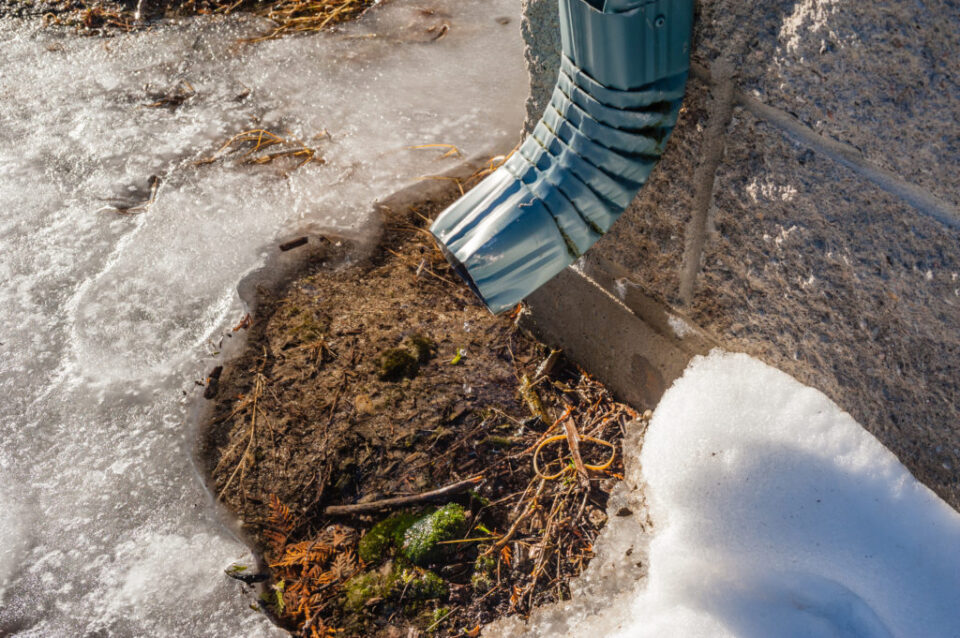As spring storms approach, it’s vital to guarantee your basement is ready to handle the potential onslaught. You’ll want to start by examining your basement for any cracks in the walls, as these can be gateways for water infiltration. Once you’ve sealed those, don’t forget about your drainage systems—those gutters and downspouts need to be clear and directing water away from your home.
Inspect for Cracks
Spring storms can wreak havoc on your basement if it’s not properly sealed, so inspecting for cracks is essential. Start by examining the interior and exterior walls of your basement.
Look closely at areas where the walls meet the floor, as these joints are prone to cracking. Even small fissures can let water seep in, causing significant damage over time.
Don’t forget to check around windows and doors, as these spots often develop gaps that go unnoticed. Use a flashlight to shine into corners and crevices, making it easier to spot any potential issues. If you discover any cracks, act swiftly. You can use a concrete patch or an epoxy sealant to fill them, which will help prevent water infiltration.
Additionally, inspect the foundation for signs of shifting, such as uneven floors or warped door frames. These could indicate larger structural issues that might require professional attention.
Taking these steps now can save you a lot of trouble later. Remember, the goal is to guarantee your basement remains dry and secure, even when Mother Nature is at her fiercest.
Check Drainage Systems
When it comes to protecting your basement from flooding caused by spring storms, checking your drainage systems is vital. Start by examining your gutters and downspouts. Make certain they’re clear of debris like leaves and twigs, which can obstruct water flow. Clogged gutters can lead to water overflow, directing it toward your home’s foundation instead of away from it.
Confirm your downspouts extend at least four to six feet from your foundation. This distance helps to prevent water from pooling around your basement, reducing the risk of leaks and seepage.
Next, assess the grading around your home. The ground should slope away from your foundation at a slight angle. If it slopes toward your home, water will naturally flow toward it, increasing the likelihood of basement flooding. You might need to add soil to create a more effective slope. Check any exterior drains, such as those around driveways or patios, to verify they’re not blocked. These drains play a significant role in diverting water away from your home, helping to prevent water from overwhelming your sewer lines causing sewage backup and basement water intrusions.
Regularly clearing leaves and debris from these areas will help maintain their functionality, making sure your basement stays dry during spring storms.
Test Your Sump Pump
To guarantee your basement stays dry, it’s crucial to test your sump pump before spring storms hit.
Begin by locating the pump in your basement. Check that it’s plugged into a working outlet and that the cord is in good condition. Once that’s done, pour a bucket of water into the sump pit. This will trigger the float switch, causing the pump to activate. If the pump turns on and drains the water efficiently, it’s functioning properly. If not, you may need to reset it, clear away any debris, or consider a replacement.
Next, inspect the discharge pipe. Make certain it’s free from obstructions and directs water away from your home’s foundation. Clear any visible blockages and verify that all connections are secure. This prevents backflow and ensures that water is effectively channeled away from your basement.
Keep an eye out for unusual sounds or vibrations when the pump operates. These can indicate mechanical issues needing professional attention. Regular maintenance, such as cleaning the intake screen, can enhance performance.
Elevate and Waterproof Storage
With spring storms on the horizon, elevating and waterproofing storage in your basement is essential. Start by evaluating the current setup. Any items that are sensitive to water damage, like important documents, electronics, or sentimental items, should be prioritized.
Use sturdy shelving units to elevate these items at least a foot off the floor. This simple step can prevent water damage if minor flooding occurs.
Next, focus on waterproofing. Store items in plastic bins with tight-fitting lids instead of cardboard boxes. Not only are they more durable, but they also provide an extra layer of protection against moisture.
Label these bins clearly for easy access when needed. You can also use vacuum-sealed bags for clothing or linens to keep them dry and free from mildew.
Consider installing a dehumidifier to control moisture levels, reducing the risk of mold and mildew in your storage area.
Regularly check for leaks or cracks in the walls and seal them with waterproof caulk or masonry sealer. This proactive approach guarantees that even if water finds its way in, the water damage will be minimal and your belongings remain safe and sound, giving you peace of mind during spring storms.
Install Backup Power
Imagine the power suddenly going out during a spring storm, leaving you in the dark and your sump pump without electricity. This scenario can quickly escalate into a flooded basement, causing damage to your belongings and the foundation.
To prevent this, installing backup power for your sump pump is vital. A battery backup system guarantees your pump continues to operate even when the power goes out, giving you peace of mind during severe weather.
First, assess the power needs of your sump pump. Check the pump’s voltage and wattage requirements to select a compatible battery backup system. Many systems come with an easy-to-follow installation guide, so you can set it up without professional help.
However, if you’re not comfortable with electrical work, hiring a professional is a smart investment.
Another option is a generator. Portable generators can power multiple devices, not just your sump pump, during an outage. Choose a generator with enough capacity to handle your essential appliances.
Remember to test your backup power system regularly to verify it’s functioning correctly. With a reliable backup in place, you’ll be ready to face any storm with confidence.
Stock Emergency Supplies
Preparing for spring storms means having at least a basic stockpile of emergency supplies. Start with essentials like water and non-perishable food. Aim for a three-day supply per person. Don’t forget manual can openers and utensils. Water is crucial, so store at least one gallon per person per day.
Next, confirm you have a first-aid kit complete with bandages, antiseptic wipes, and any necessary medications. A battery-powered or hand-crank radio keeps you informed during power outages. Include spare batteries for your flashlight and radio.
Consider your comfort and warmth. Pack blankets, extra clothing, and sturdy shoes. If the power’s out for a while, these items can make a difference.
Add hygiene essentials like moist towelettes, garbage bags, and plastic ties. They’ll help maintain cleanliness and sanitation.
For communication, have a charged portable phone charger. You might need to contact family or emergency services. Don’t forget multi-purpose tools; they’re handy for repairs or emergencies.
Finally, store important documents like insurance policies in a waterproof container. With these supplies, you’re ready to face spring storms with confidence and peace of mind.

